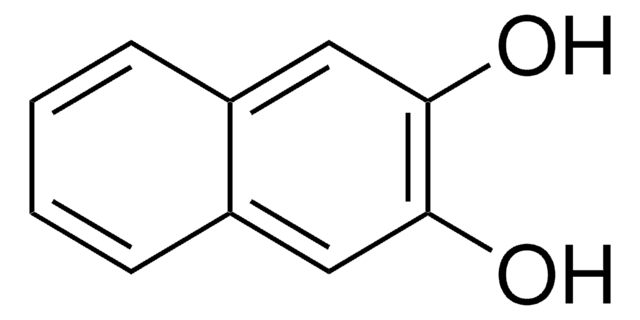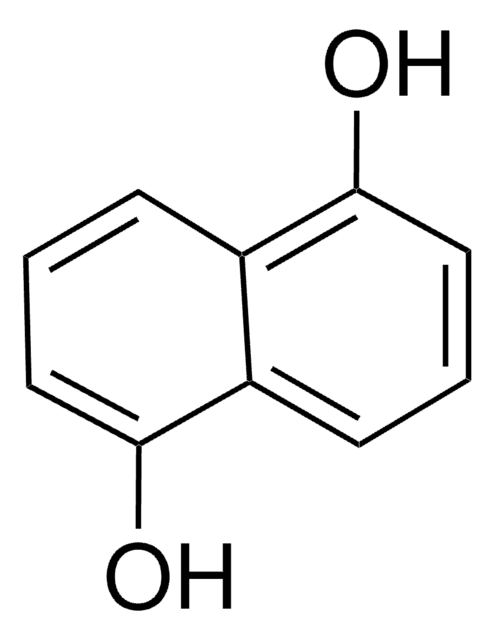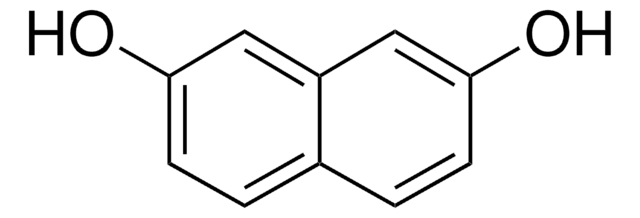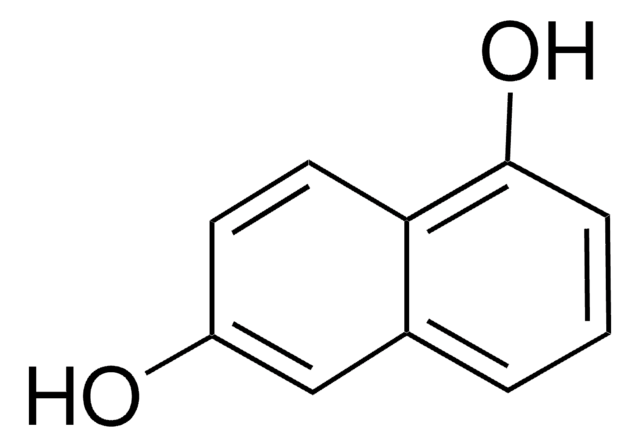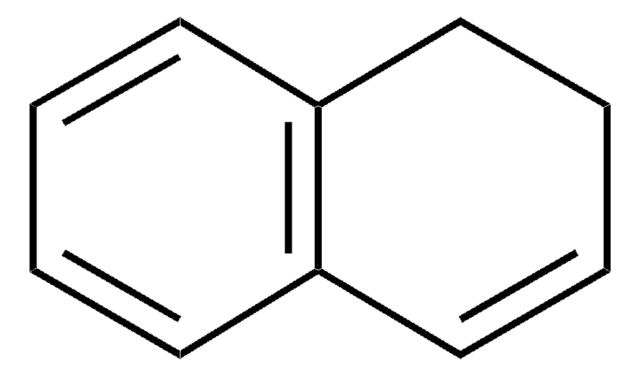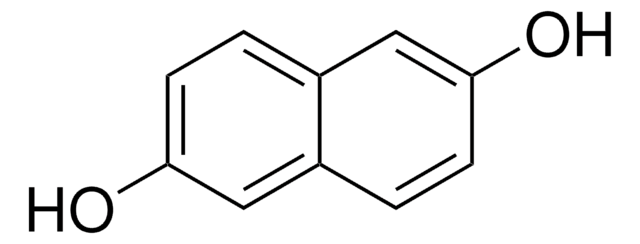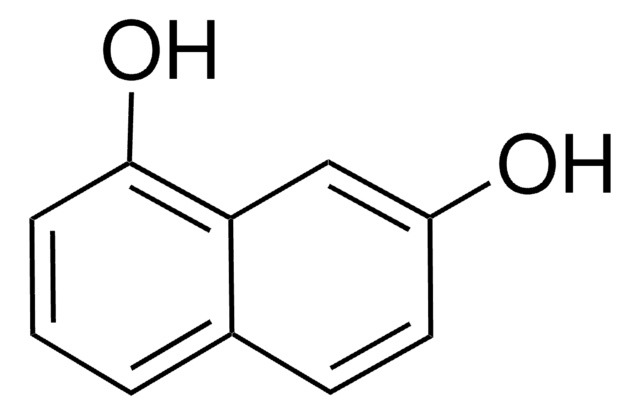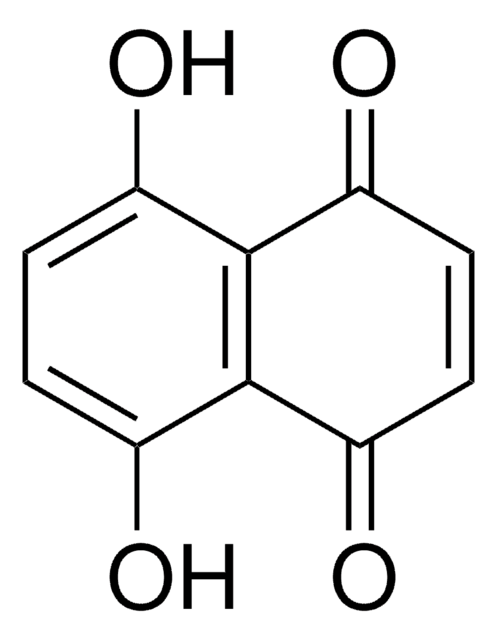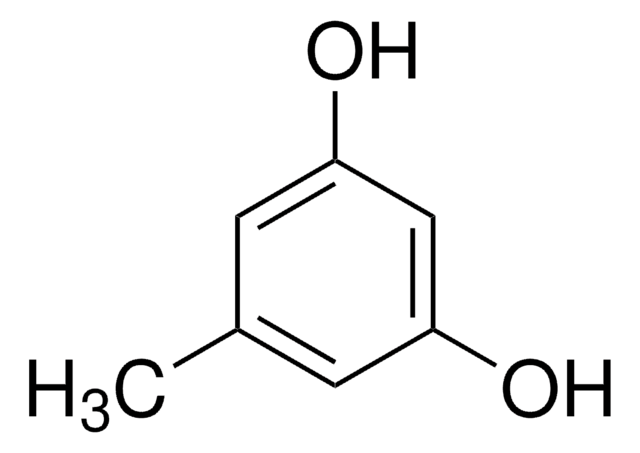Kluczowe dokumenty
232505
1,2-Dihydroxynaphthalene
technical grade
Synonim(y):
1,2-Naphthalenediol
About This Item
Polecane produkty
klasa czystości
technical grade
mp
101-103 °C (lit.)
ciąg SMILES
Oc1ccc2ccccc2c1O
InChI
1S/C10H8O2/c11-9-6-5-7-3-1-2-4-8(7)10(9)12/h1-6,11-12H
Klucz InChI
NXPPAOGUKPJVDI-UHFFFAOYSA-N
Opis ogólny
Zastosowanie
Hasło ostrzegawcze
Warning
Zwroty wskazujące rodzaj zagrożenia
Zwroty wskazujące środki ostrożności
Klasyfikacja zagrożeń
Eye Irrit. 2 - Skin Irrit. 2 - STOT SE 3
Organy docelowe
Respiratory system
Kod klasy składowania
11 - Combustible Solids
Klasa zagrożenia wodnego (WGK)
WGK 3
Temperatura zapłonu (°F)
Not applicable
Temperatura zapłonu (°C)
Not applicable
Środki ochrony indywidualnej
dust mask type N95 (US), Eyeshields, Gloves
Wybierz jedną z najnowszych wersji:
Masz już ten produkt?
Dokumenty związane z niedawno zakupionymi produktami zostały zamieszczone w Bibliotece dokumentów.
Klienci oglądali również te produkty
Active Filters
Nasz zespół naukowców ma doświadczenie we wszystkich obszarach badań, w tym w naukach przyrodniczych, materiałoznawstwie, syntezie chemicznej, chromatografii, analityce i wielu innych dziedzinach.
Skontaktuj się z zespołem ds. pomocy technicznej
